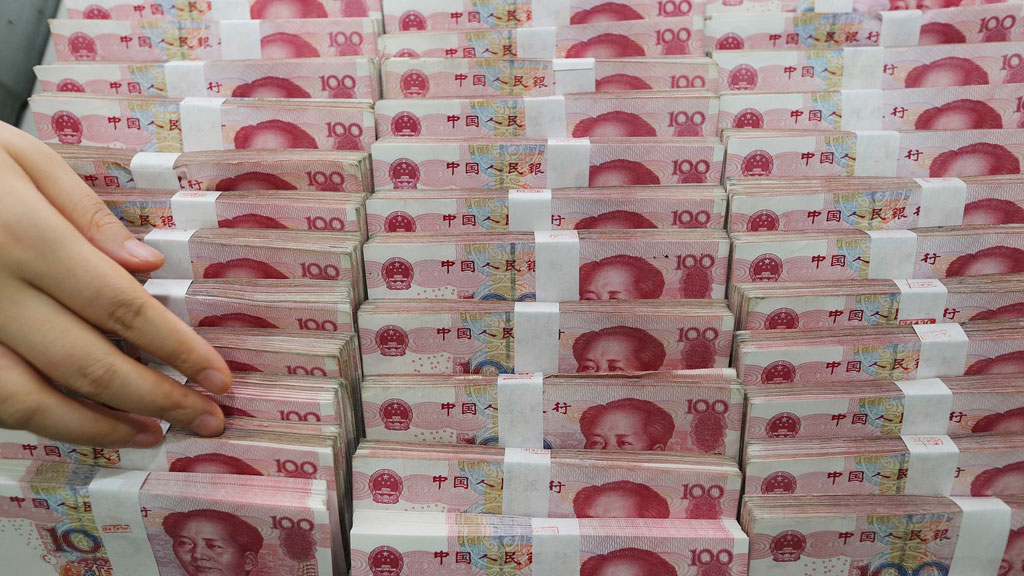 BEIJING: China's foreign exchange reserves rose slightly more than expected in January as the yuan rallied on hopes for progress in Sino-US trade talks that could lift some pressure on the cooling Chinese economy.
BEIJING: China's foreign exchange reserves rose slightly more than expected in January as the yuan rallied on hopes for progress in Sino-US trade talks that could lift some pressure on the cooling Chinese economy.
China's reserves rose by $15.2 billion in January - the biggest increase in a year - to $3.088 trillion, central bank data showed on Monday. That compared with a rise of $11 billion in December.
Economists polled by Reuters had expected an increase of $9.3 billion.
The relatively modest rise in China's reserves in January was due to an appreciation of non-dollar currencies and increases of the prices of financial assets it holds, the foreign exchange regulator said in a statement.
China struck an upbeat note on Monday as trade talks resumed with the United States, but also expressed anger at a US Navy mission through the disputed South China Sea, casting a shadow over the prospect for improved Beijing-Washington ties.
Many analysts are doubtful Beijing will agree to Washington's demands for major structural reforms, but believe the two sides may find enough common ground to keep talking and postpone a US tariff hike on Chinese goods that is slated for March 1.
Analysts believe China has been keen to keep the yuan stable in recent weeks to provide a better atmosphere for the trade discussions. Trump has repeatedly criticised Beijing's managed currency regime, saying it is manipulating the yuan to gain a trade advantage.
The yuan appreciated 2.6 percent against the faltering dollar in January, hitting its highest level in over 6 months at one point, after falling 5.3 percent last year.
Weighed down by tighter credit conditions and weakening demand, China's economic growth cooled to 6.6 percent in 2018, the slowest pace in 28 years.
So far, tighter capital controls have prevented heavy capital outflows like those seen in the last downturn in 2015. China's foreign exchange reserves fell by $67.24 billion in 2018, though they remain the world's largest.
Developments in trade talks are expected to be the key determinant for the yuan's direction in the near-term, with time quickly running out before the early March deadline.
But investors will also be closely watching China's data for any hints it may be at risk of a sharper economic slowdown.
Monthly factory activity gauges have shown back-to-back contractions and hundreds of companies have issued profit warnings in recent weeks.
Most analysts polled by Reuters earlier this year still expect the yuan to break the key 7 to the dollar mark by July, as the dimming economic outlook pushes authorities to ramp up policy easing. It is now around 6.7952.
China's central bank has slashed banks' reserve requirements (RRR) five times already over the past year, including twice last month, and further cuts are expected in coming quarters.
Some analysts also say interest rate cuts of some form cannot be ruled out if business conditions continue to deteriorate.
Outflow pressure could be offset in part by growing foreign investments in Chinese stocks and bonds, though portfolio flows are highly sensitive to changes in foreign exchange and interest rates.
China's stock regulator has predicted foreign inflows into shares will double this year from last, and starting in April Chinese bonds will be added into a major global benchmark index.
But more structural changes are also starting to come into play.
China's current account is slowly swinging from a decades' long surplus towards a deficit, signalling a major shift in global capital flows into and out of the country which could make the yuan exchange rate more volatile.
With the economy increasingly reliant on domestic consumption rather than exports, it is no longer amassing dollars at a rapid rate.
Moreover, inflows in the form of foreign direct investment in China rose just 3 percent last year, and continued trade uncertainties could prompt more firms shift production to other countries.
The value of China's gold reserves rose to $79.319 billion from $76.331 billion at the end of December.



















Comments
Comments are closed.